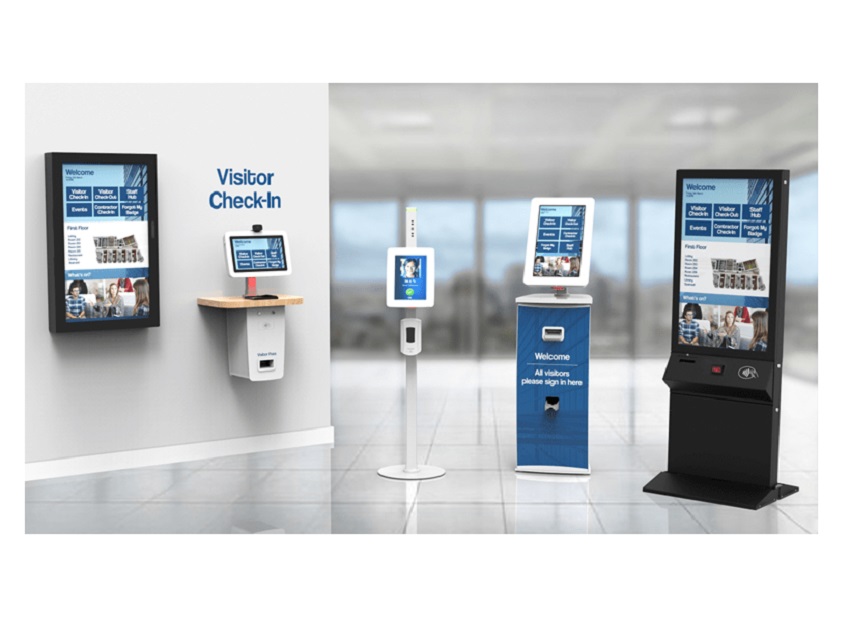The Benefits of Using Medical Check-In Kiosks for Patients

Patient check-in kiosks replace a traditional sign-in sheet or data collection form. These interactive, self-service terminals may include touchscreens, card scanners, chip readers, and signature pads. Patients of all ages are comfortable with technology and expect healthcare facilities to offer the same conveniences they’re used to in their everyday lives. In addition to allowing patients to sign in and check in quickly, medical kiosks increase staff efficiency and reduce costly errors.
Reduced Administrative Workload
Medical offices and hospitals face constant challenges with staffing shortages. These shortages create long delays for patients and staff, frustrating both parties. A medical check-in kiosk can help reduce the front office workload so staff can focus on patient interactions. Kiosks can handle tasks usually done by your front desk, including checking in and making payments. They can also serve as facility maps and answer general questions about the hospital or clinic. Patients are used to the convenience of online bill-pay, online scheduling, and other digital tools that make their lives easier. They expect the same from their healthcare providers, and a seamless digital experience is critical to building loyalty to your practice. Ensure your check-in system is easy to use and meets accessibility standards, particularly for vision-impaired users. It must also integrate seamlessly with your EHR and PM systems to eliminate data-entry errors. Finally, look for a solution certified by comprehensive security compliance frameworks. This will help reduce your risk of PHI breaches.
Improved Patient Care
Patient kiosks can be expensive to maintain and install, but they are an excellent solution to help improve a medical practice’s patient experience, reducing waiting times and overall revenue. They’re a wise investment for both small and large healthcare facilities. Using a kiosk to check in for a doctor’s appointment allows registration teams to focus on greeting patients and answering any questions they may have. This improves the customer experience and creates an image of excellent service that patients will be happy with when they return for future appointments. Using a medical check-in kiosk also helps reduce paperwork and errors often found with paper sign-in sheets. The information entered into the system is accurate and time-stamped, allowing for logs to be built to document office statistics and improve the efficiency of the medical facility. These logs are helpful when analyzing office performance and ways to improve staffing needs.
Enhanced Patient Experience
Patient kiosks allow medical practice staff to focus on more personalized patient interactions. They also speed up the process and increase efficiency. This reduces the time needed to collect patient payments and improves overall revenue for the medical facility. Kiosks can verify insurance eligibility, deductibles, and coverage, which cuts down on worker data entry. They can also provide customized patient education and discharge instructions, which enhances treatment plan adherence. They can even take headshots for more robust ID and file-keeping purposes or function as a facility map. Unlike paper sign-in sheets that require a human to write at the time of arrival, kiosks automatically record and log this information. They can also be viewed from other department computers as an interactive queue, making it easier to respond to patient inquiries.
Increased Patient Satisfaction
Patient satisfaction is a critical part of any medical practice. Patients expect, and even demand, a streamlined and convenient transaction with their healthcare providers. Patient check-in kiosks help to provide this by eliminating the need for lengthy intake forms and complex ID verification processes. They also reduce on-site wait times by allowing patients to join virtual queues remotely and receive real-time position updates. They can even collect point-of-service payments, further streamlining the process. Another way to improve patient satisfaction is by letting them know that their privacy is a top priority. Instead of asking patients to write their names on a sign-in sheet that may be publicly exposed, kiosks can securely verify patient identities with their mobile devices or through a photo ID scan. When a patient’s appointment is set, the kiosk can send a reminder to the patient via text or email. This gives patients peace of mind that they can remember their appointment details, which can be a significant stress reliever. The kiosks also add a modern feel to a facility, which can help attract patients and boost first-time visits.
Increased Revenue
Using kiosks to check in patients increases revenue by eliminating the cost of ink and paper, reducing time spent on administrative tasks, and streamlining the process of collecting copays and past-due bills. It also reduces the risk of billing and insurance processing errors that can be costly to large healthcare practices. Self-service kiosks can include keypads or touchscreens, card scanners or chip readers, and signature pads, depending on the facility’s needs. Some even link to the office’s EMR system to pull in patient records so they can view when a patient checks in. Kiosks can also take patient headshots or select one from a predetermined list and enter reasons for their visit, which helps streamline the data collection process. Kiosks that accurately time stamp each entry build a log that management can use to document and analyze office statistics. This information can also be shared between departments to respond more quickly to patients. Unlike traditional sign-in sheets, which expose names to the public, these private kiosk entries help ensure customer privacy.
